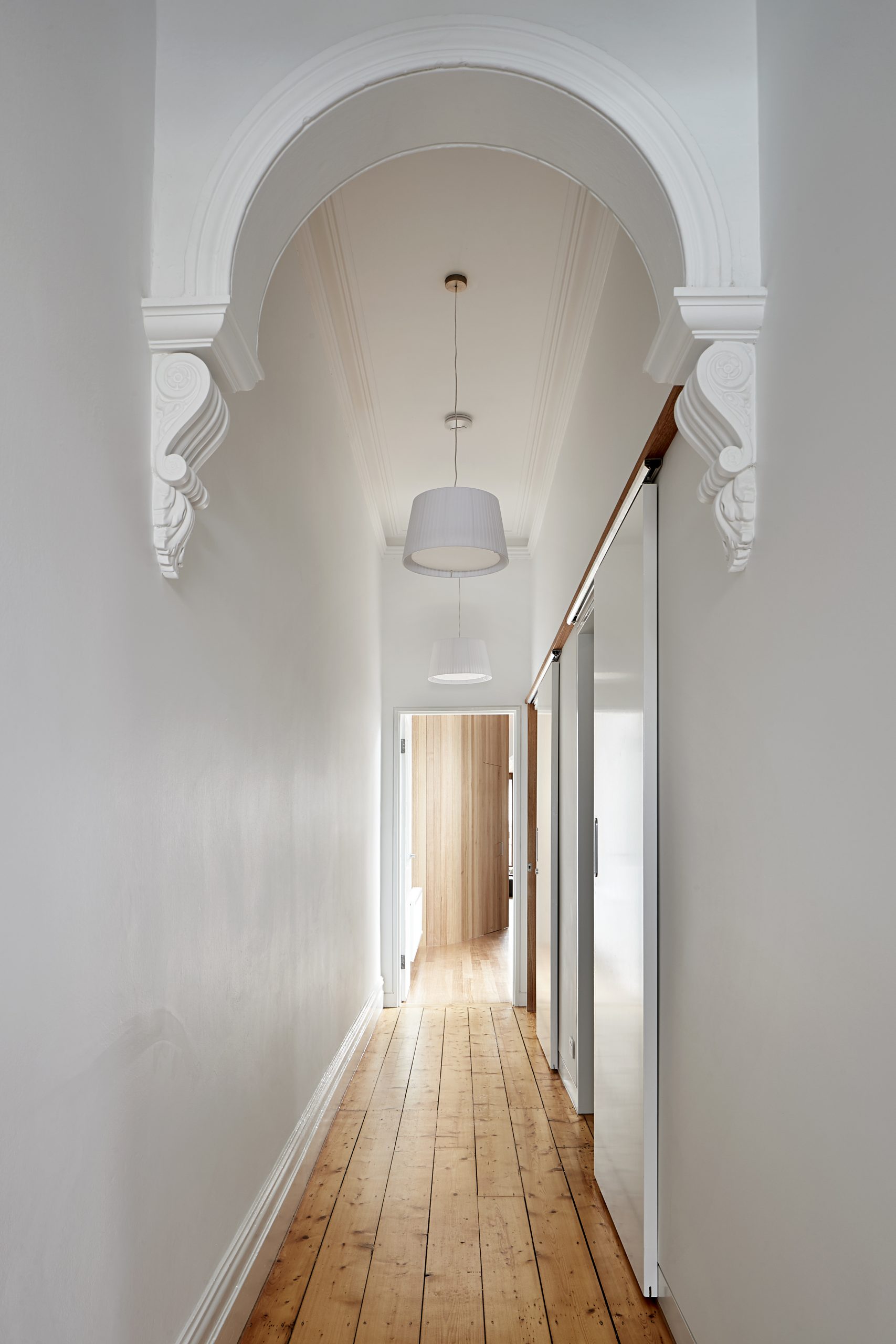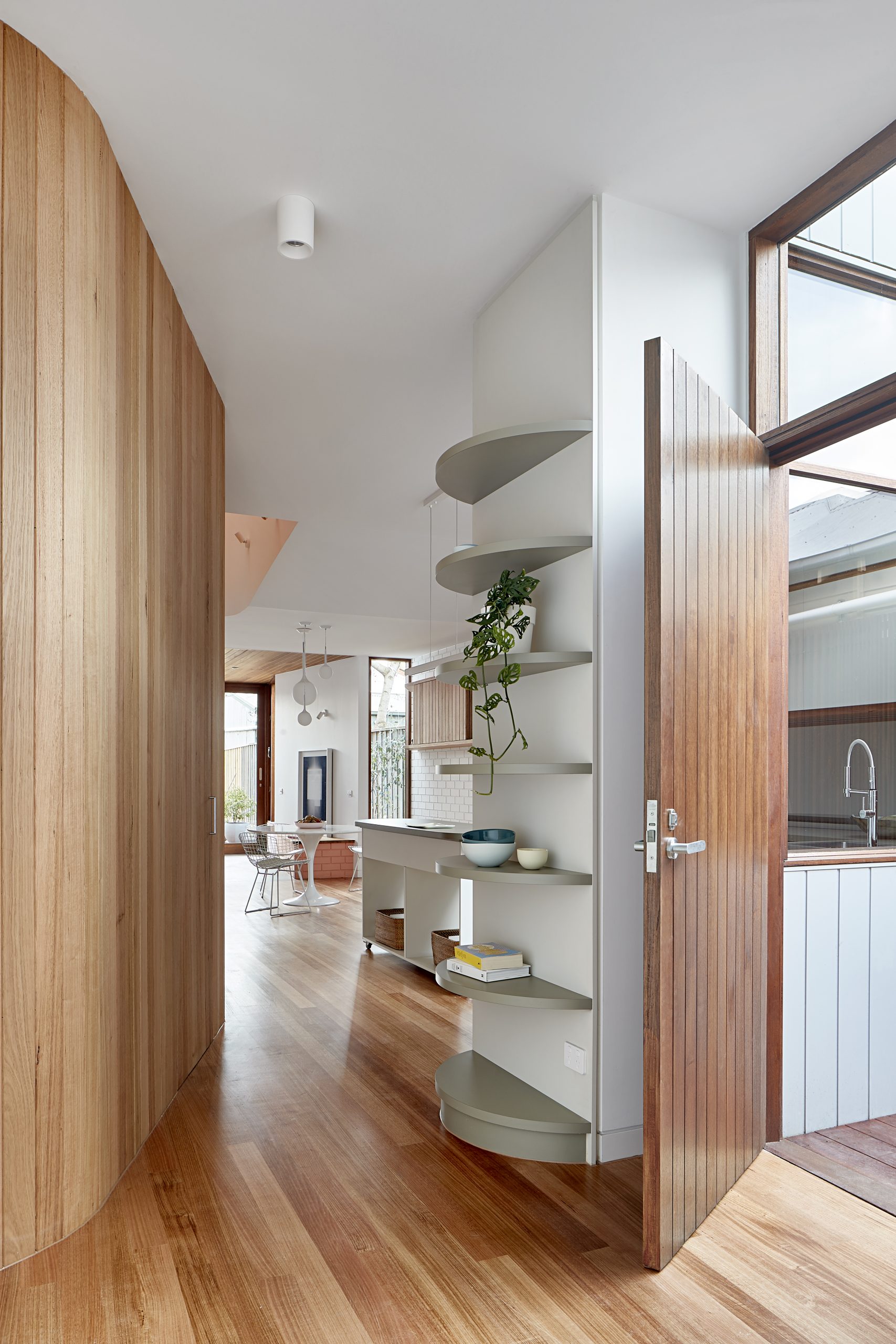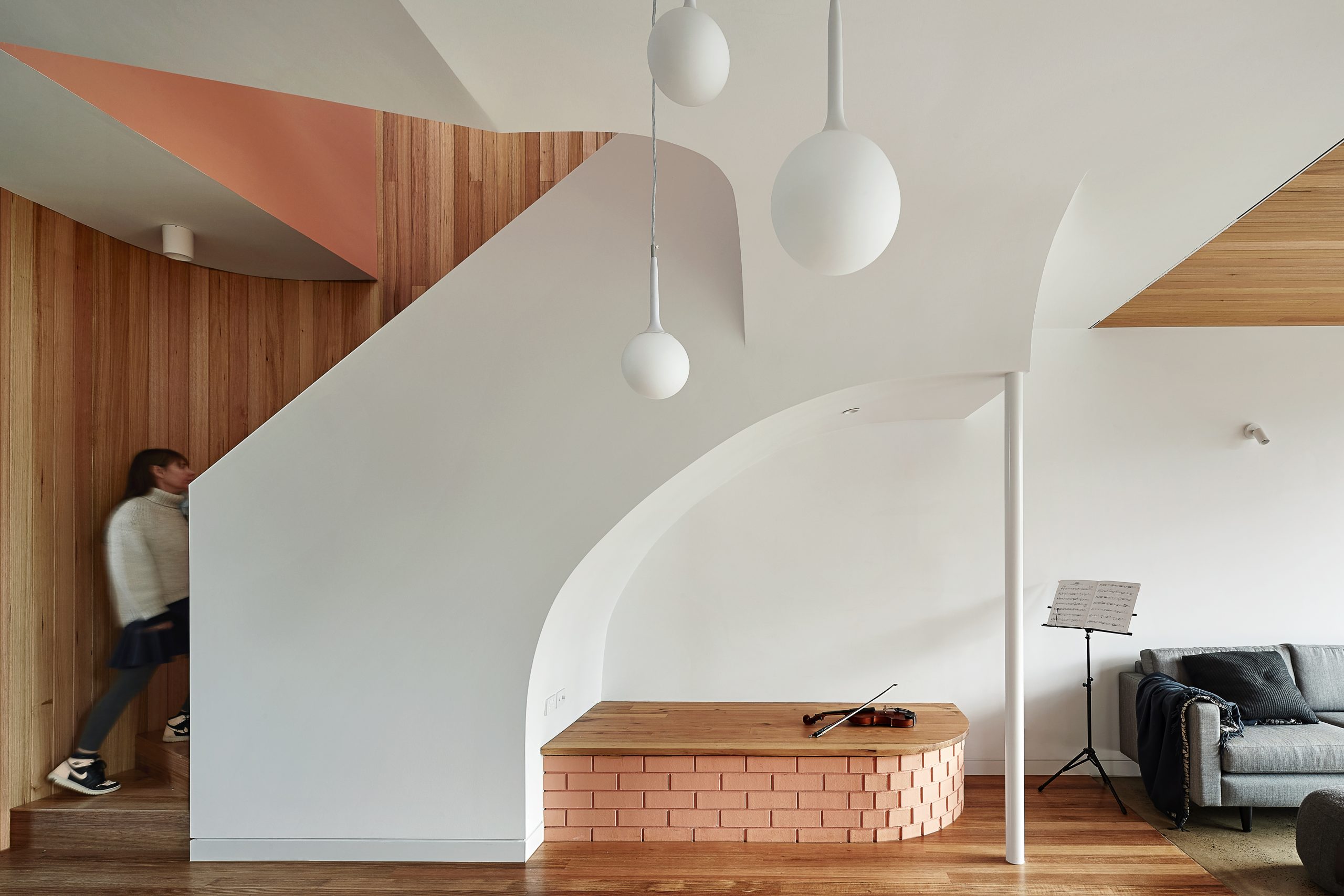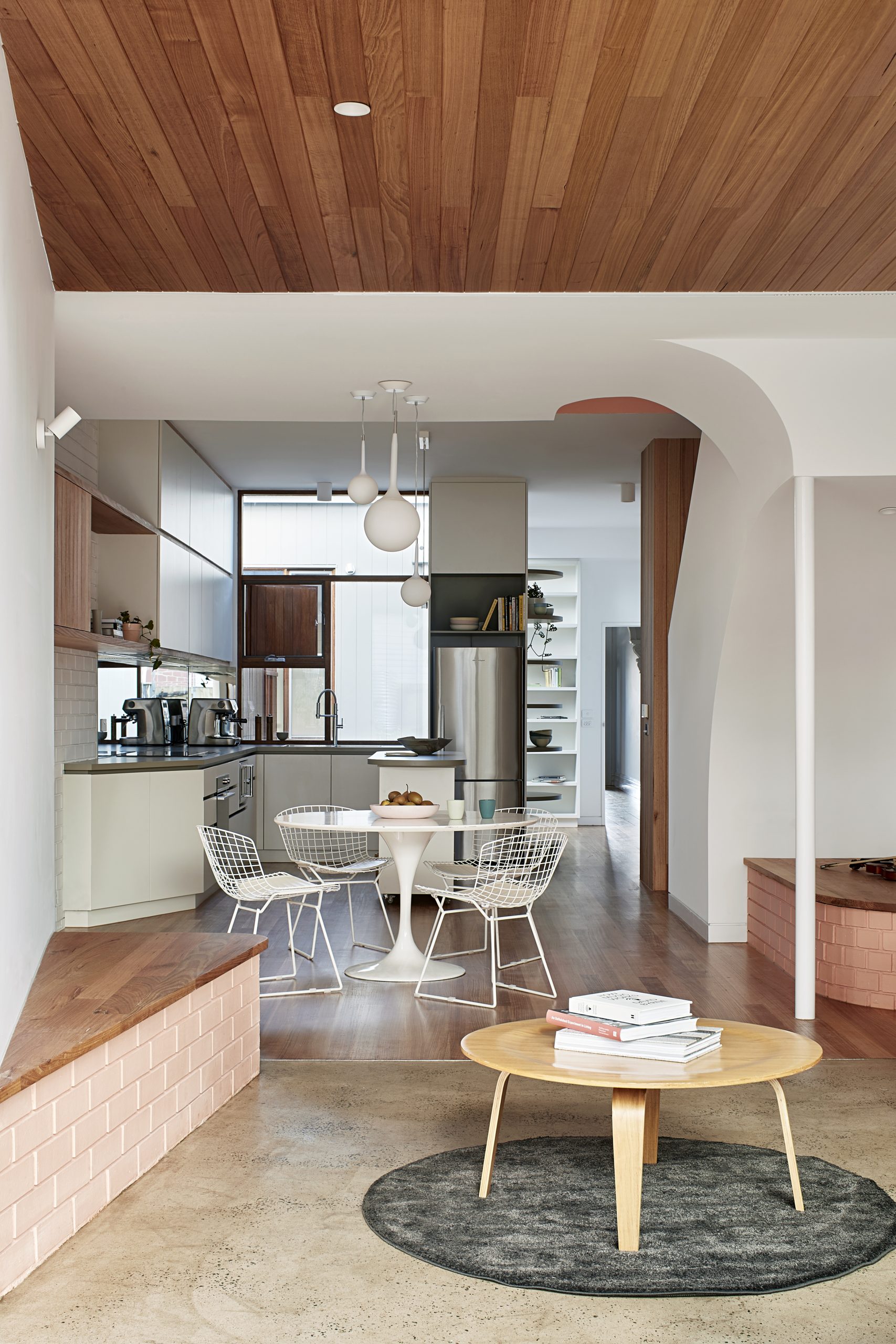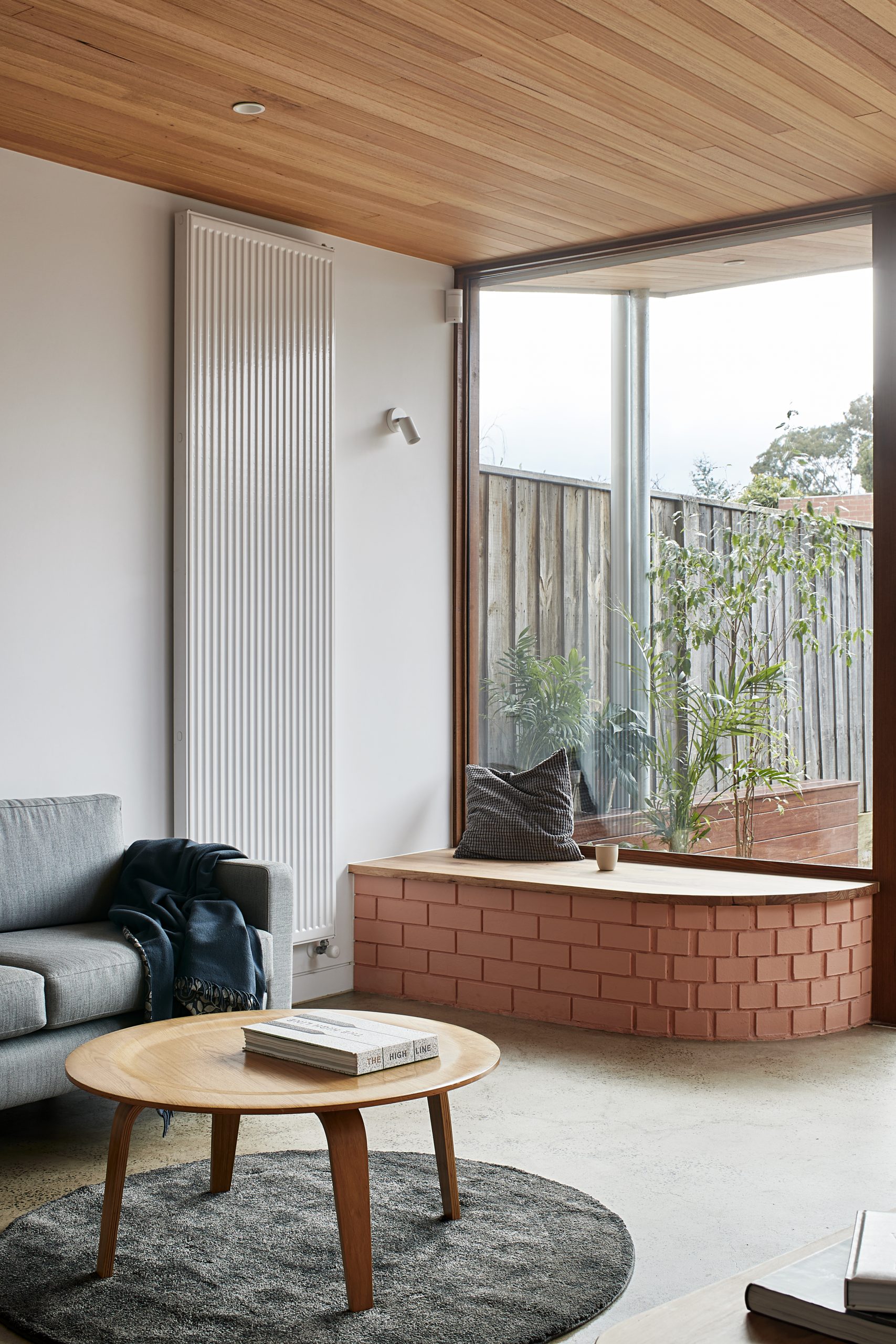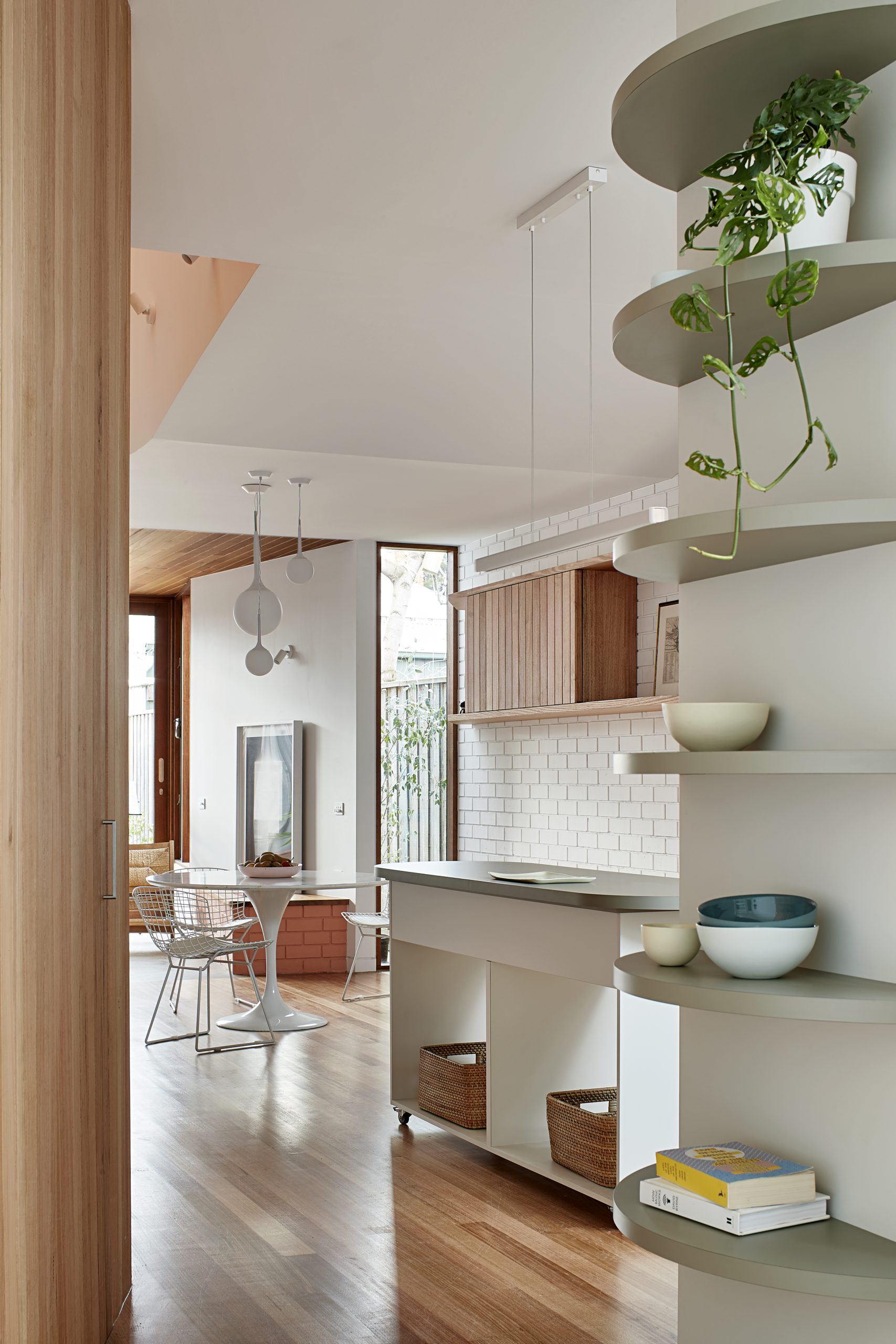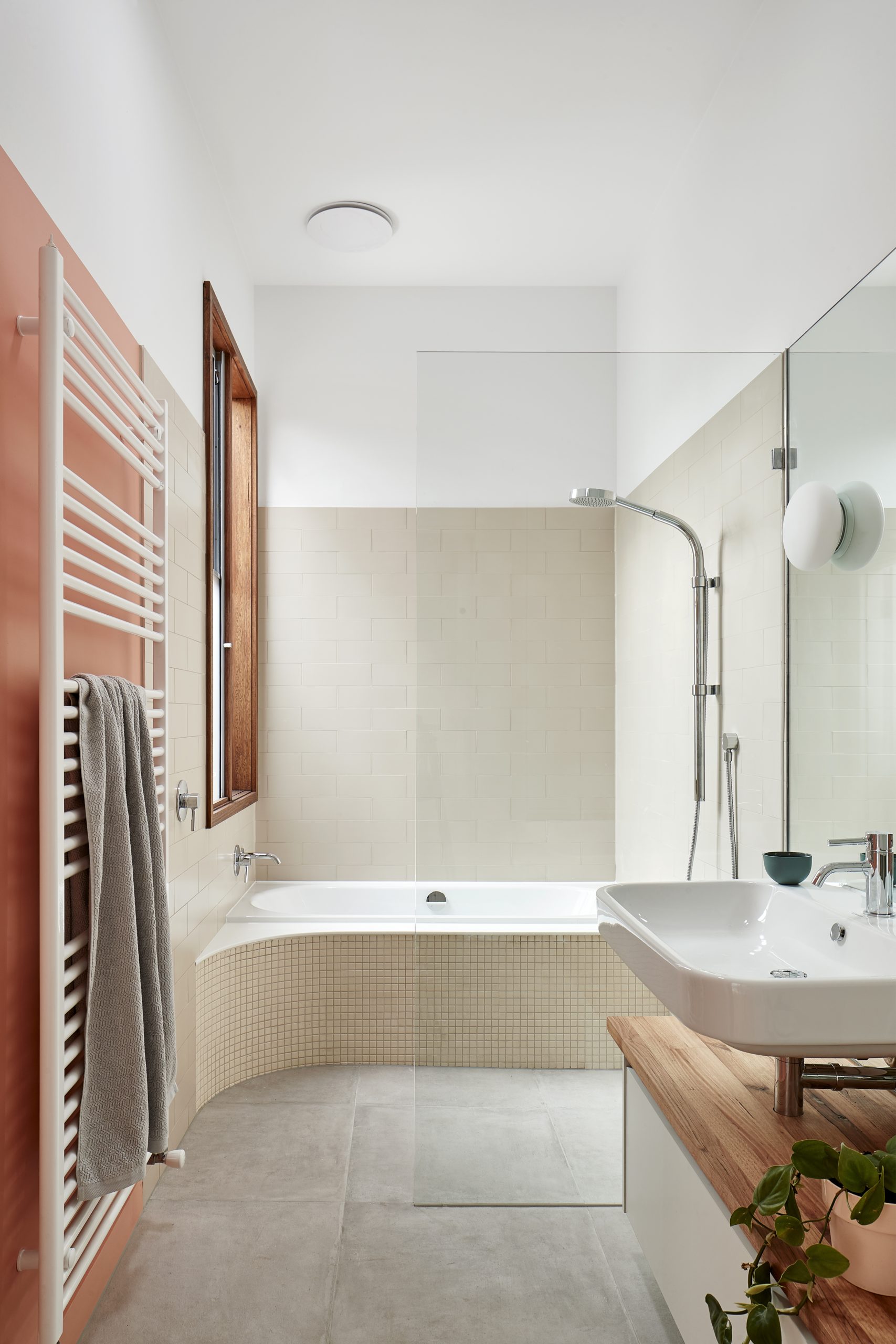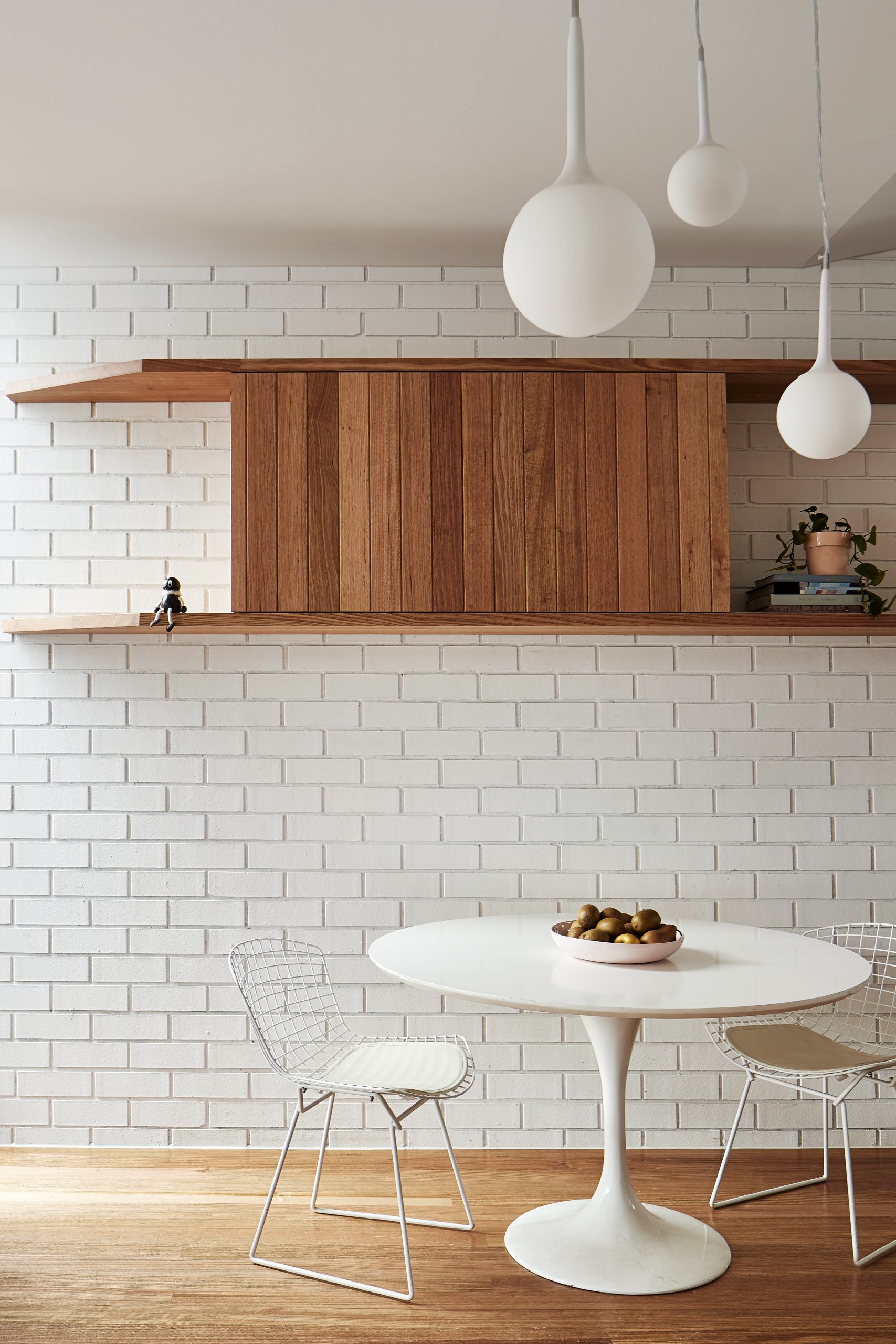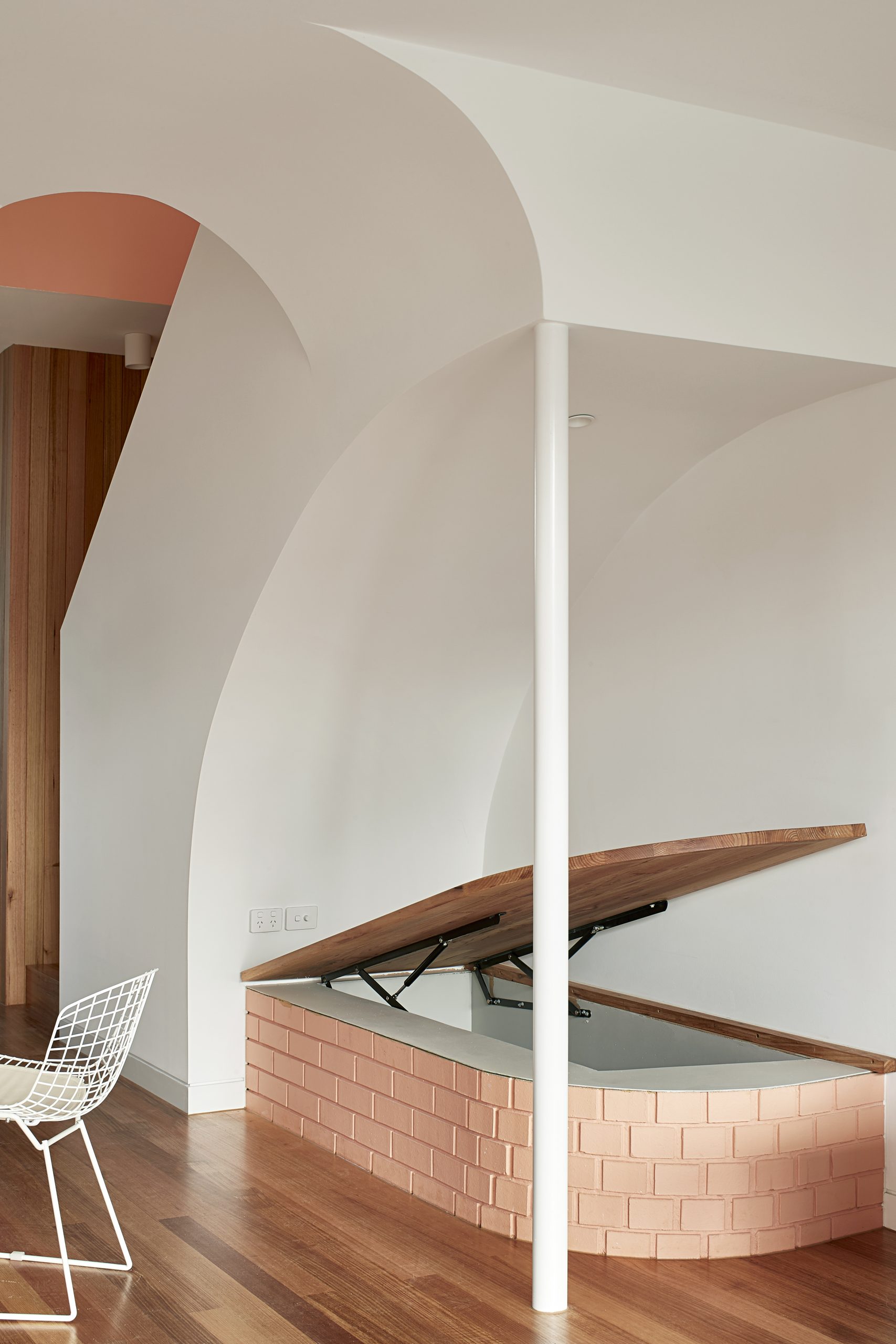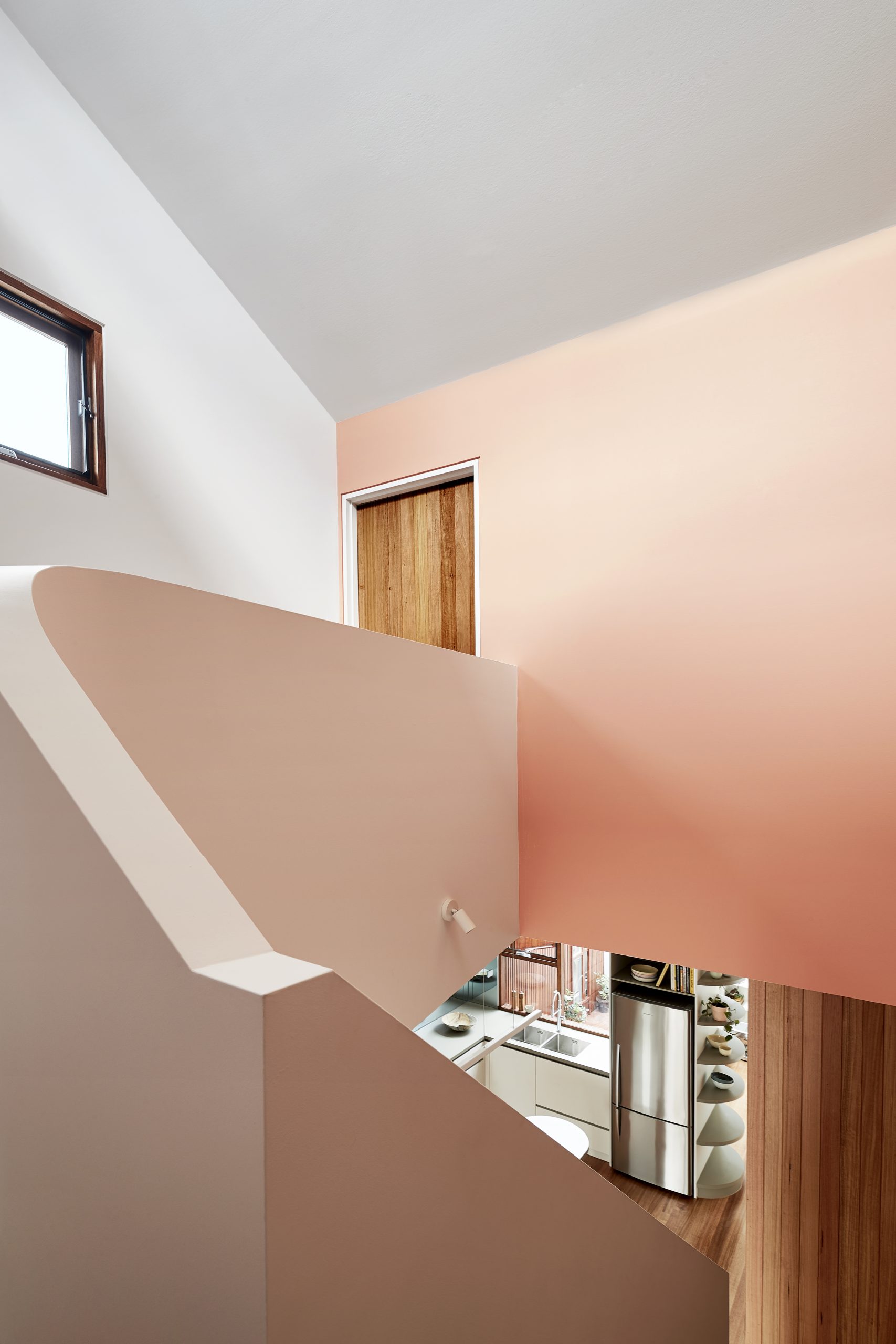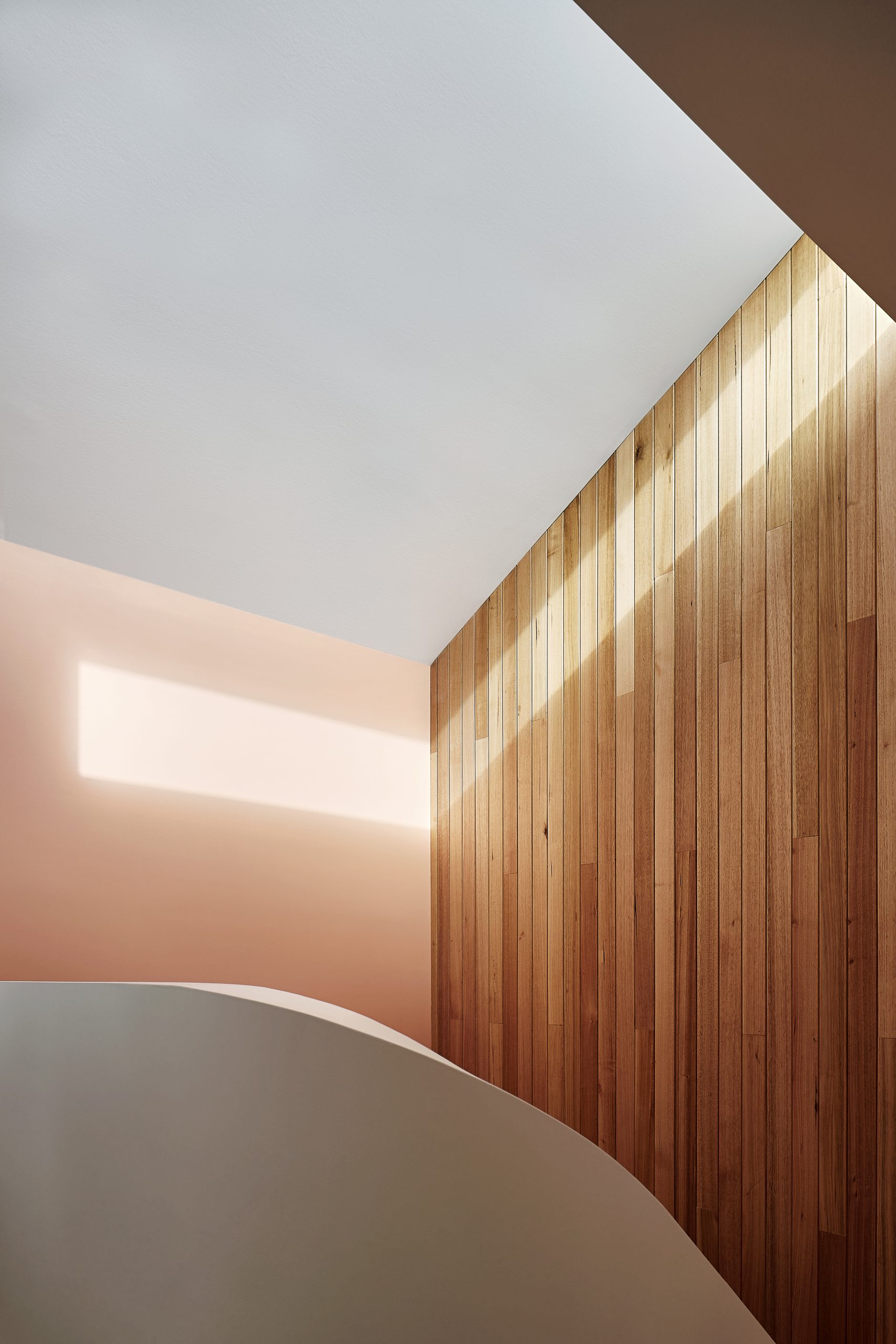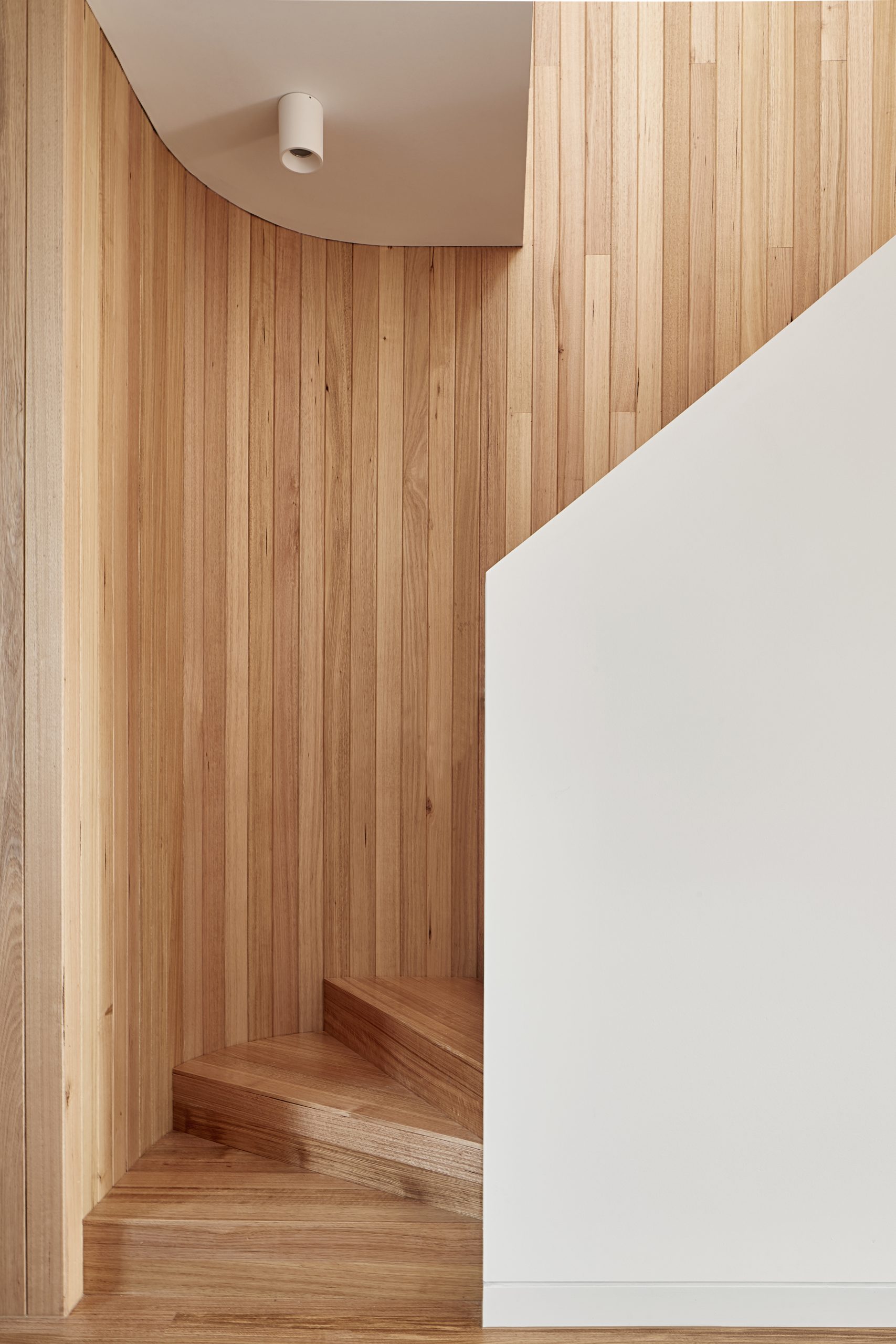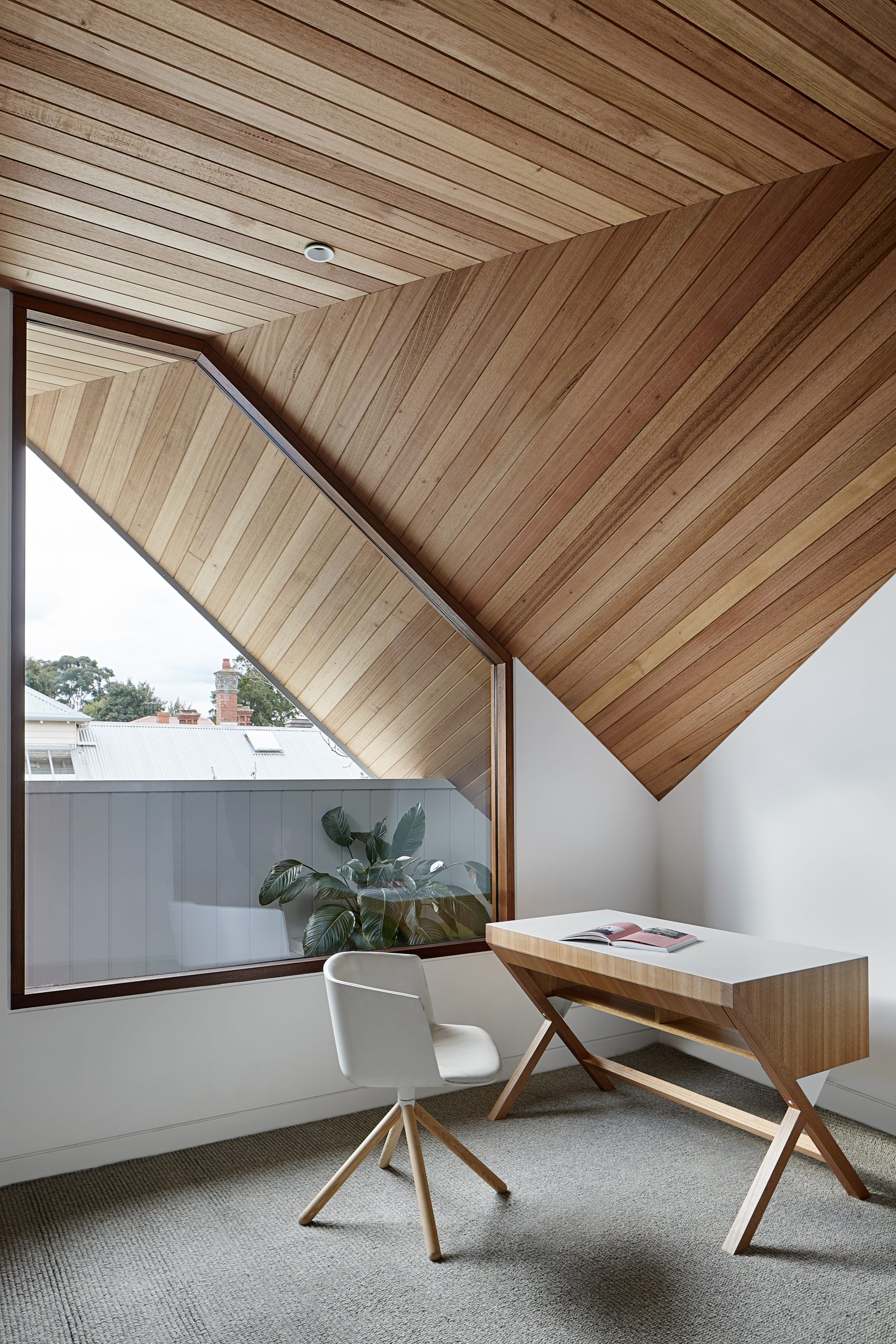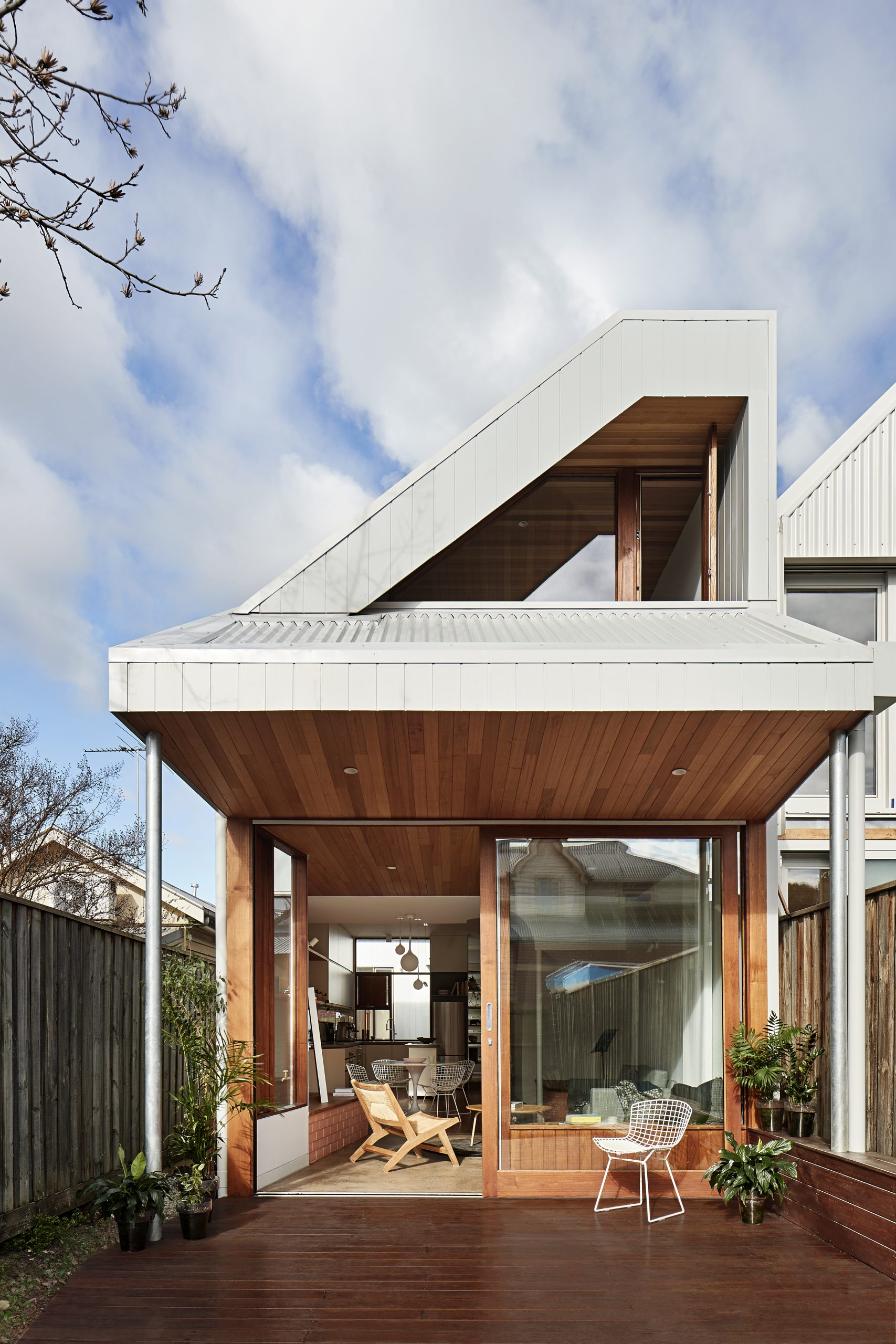Having its origins in China and going back about 6,000 years, it literally translates to “wind and water”. It is a concept aiming to design buildings and their surroundings for harmony and happiness.
Feng Shui calls on you to place objects to allow for the flow of natural energy through a space and all living things. In this context it is understood that a building’s layout, colours and materials affect energy flow.
Feng Shui design applies three core principles: allow energy to flow, balance between natural elements with their own sets of attributes including colour, texture and shape, and place objects that represent your life’s journey within a space.
Examining plan and images of this home make the project brief self-explanatory, so let’s talk about our design decisions, a series of small and considered moves based on the study of Feng Shui principles.
Gradual Revelation
Much like other projects, this building is situated in a heritage streetscape. The old terrace was restored, a new curved timber wall at the end of the hall both links the old house with the new extension and provides a barrier to the street.
Old and new are separated with a courtyard that provides sunlight into the old, and natural light and ventilation into the new house. The passage linking terrace with extension was widened to make space for a study with access to outside. The curved timber wall, enclosing a store, leads into the kitchen planned to greet visitors at arrival and overlooking courtyard and study.
Behind the store a stair void appears. The back is coloured reflecting light into the space below. Colour and materials only reveal themselves gradually, a design move often applied by Mexican architect Louis Barragan and one of my favourites.
Between stair and kitchen, we placed the dining room, a busy, engaging and open space, designed to encourage conversation.
The timber floor of the dining continues into the ceiling of the adjacent lounge, a retreat with a sense of calm. A window seat allows lying in the sun, while looking back into house and courtyard and out into the garden.
The upstairs rooms, more exposed to sun, wind and rain are formed and finished to achieve a balance between shelter from elements and exploring views into the distance.
Premeditated Coincidence
The best form of interaction is the coincidental and the skill lies in planning the coincidence. Some layout and design decisions were made for this purpose such as brick platforms for seats facing dining space or lounge to allow for interaction.
Subtle Contradictions
For an economic house on a narrow block a compact footprint seems logical. However, logical is not always best.
The lounge room walls were skewed and stretched, drawing sunlight and the garden into the dining space. The stairwell itself forms a large void prioritising space over utilities. It appears oversized. However, the benefits are obvious: elevated beyond providing access, the stair creates a light filled and generous living space on a small footprint.
Build less, accomplish more
Like any building project, the Feng Shui house aims to balance user needs with cost, both financial and environmental.
To build climate conscious requires building less, and the key lies in achieving excellence with lesser means. We trust this has been achieved by applying principles of balance, meticulous planning and playing with space and scale.
